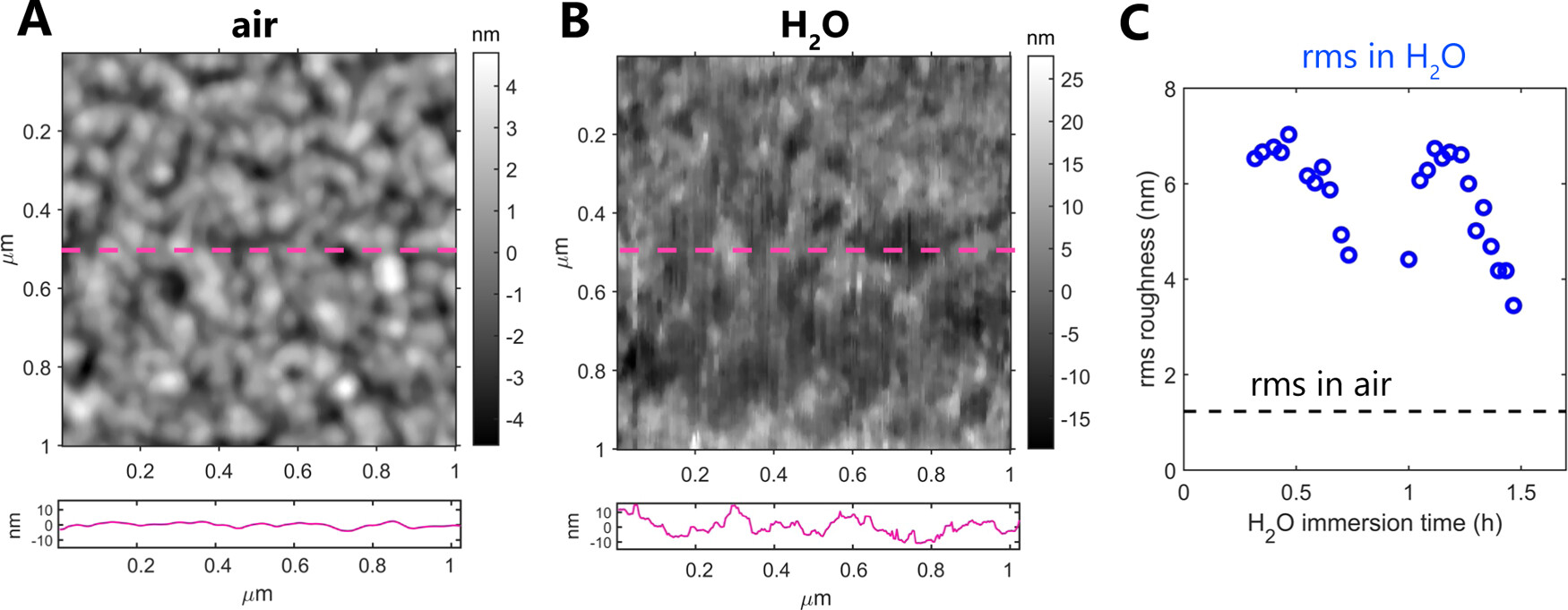Liquid–liquid phase-separated biomolecular condensates, liquid droplets play an important role in many biological processes, such as gene expression, protein translation, stress response, and protein degradation, by incorporating a variety of RNA and client proteins into their interior depending on the intracellular context. *
Autophagy is involved in the degradation of several cytoplasmic liquid droplets, including stress granules and P bodies, and defects in this process are thought to cause transition of these droplets to the solid phase, resulting in the development of intractable diseases such as neurodegenerative disorders and cancer. *
Of the droplets that have a unique biological function and are degraded by autophagy, p62 bodies (also called p62 droplets) are liquid droplets formed by liquid–liquid phase separation (LLPS) of p62 and its binding partners, ubiquitinated proteins. *
p62 bodies are involved in the regulation of intracellular proteostasis through their own autophagic degradation, and also contribute to the regulation of the major stress-response mechanism by sequestration of a client protein, kelch-like ECH-associated protein 1 (KEAP1). *
NRF2 is a transcription factor responsible for antioxidant stress responses that is usually regulated in a redox-dependent manner. p62 bodies formed by liquid–liquid phase separation contain Ser349-phosphorylated p62, which participates in the redox-independent activation of NRF2. *
However, the regulatory mechanism and physiological significance of p62 phosphorylation remain unclear. *
In the article “Phosphorylation of phase-separated p62 bodies by ULK1 activates a redox-independent stress response” Ryo Ikeda, Daisuke Noshiro, Hideaki Morishita, Shuhei Takada, Shun Kageyama, Yuko Fujioka, Tomoko Funakoshi, Satoko Komatsu-Hirota, Ritsuko Arai, Elena Ryzhii, Manabu Abe, Tomoaki Koga, Hozumi Motohashi, Mitsuyoshi Nakao, Kenji Sakimura, Arata Horii, Satoshi Waguri, Yoshinobu Ichimura, Nobuo N Noda and Masaaki Komatsu identify ULK1 as a kinase responsible for the phosphorylation of p62. *
ULK1 colocalizes with p62 bodies, directly interacting with p62. ULK1-dependent phosphorylation of p62 allows KEAP1 to be retained within p62 bodies, thus activating NRF2. p62S351E/+ mice are phosphomimetic knock-in mice in which Ser351, corresponding to human Ser349, is replaced by Glu. *
These mice, but not their phosphodefective p62S351A/S351A counterparts, exhibit NRF2 hyperactivation and growth retardation. This retardation is caused by malnutrition and dehydration due to obstruction of the esophagus and forestomach secondary to hyperkeratosis, a phenotype also observed in systemic Keap1-knockout mice. *
The authors’ results expand our understanding of the physiological importance of the redox-independent NRF2 activation pathway and provide new insights into the role of phase separation in this process. *
To clarify whether the ULK1 kinase itself has an effect on the physical properties and physiological role of p62 bodies, Ryo Ikeda et al. first studied the physical interaction of p62 with ULK1 or its yeast homolog Atg1 using high-speed atomic force microscopy (HS-AFM). *
HS-AFM of p62 (268–440 aa) visualized a homodimeric structure, mediated by the dimerization of the UBA domain, that formed a hammer-shaped structure with IDRs wrapped around each other. *
HS-AFM images were acquired in tapping mode using a sample-scanning HS-AFM instrument. NanoWorld Ultra-Short Cantilevers of the USC-F1.2-k0.15 AFM probe type were used. ( ~7 μm long, ~2 μm wide, and ~0.08 μm thick with electron beam-deposited (EBD) tips (tip radius < 10 nm). Their resonant frequency and spring constant were 1.2 MHz in air and 0.15 N/m, respectively.*

HS-AFM observation of SNAP-ULK1 and p62 (268–440 aa), and complex of SNAP-Atg1/p62 (268–440 aa)
A, B. Successive HS-AFM images of SNAP-ULK1 (A) and p62_268–440 (B). Height scale: 0–4.4 nm (A), 0–3.4 nm (B); scale bar: 20 nm (A, B).
C. Successive HS-AFM images of p62_268–440 with SNAP-Atg1. Height scale: 0–3.6 nm; scale bar: 30 nm.
D. Schematics showing the molecular characteristics determined by HS-AFM. Gray spheres, globular domains consisting of N-terminal KD and C-terminal MIT of Atg1; pink spheres, globular domains consisting of C-terminal UBA domain of p62; blue thick solid lines, IDRs.
*Ryo Ikeda, Daisuke Noshiro, Hideaki Morishita, Shuhei Takada, Shun Kageyama, Yuko Fujioka, Tomoko Funakoshi, Satoko Komatsu-Hirota, Ritsuko Arai, Elena Ryzhii, Manabu Abe, Tomoaki Koga, Hozumi Motohashi, Mitsuyoshi Nakao, Kenji Sakimura, Arata Horii, Satoshi Waguri, Yoshinobu Ichimura, Nobuo N Noda and Masaaki Komatsu
Phosphorylation of phase-separated p62 bodies by ULK1 activates a redox-independent stress response
The EMBO Journal (2023)42:e113349
DOI: https://doi.org/10.15252/embj.2022113349
The article “Phosphorylation of phase-separated p62 bodies by ULK1 activates a redox-independent stress response” by Ryo Ikeda, Daisuke Noshiro, Hideaki Morishita, Shuhei Takada, Shun Kageyama, Yuko Fujioka, Tomoko Funakoshi, Satoko Komatsu-Hirota, Ritsuko Arai, Elena Ryzhii, Manabu Abe, Tomoaki Koga, Hozumi Motohashi, Mitsuyoshi Nakao, Kenji Sakimura, Arata Horii, Satoshi Waguri, Yoshinobu Ichimura, Nobuo N Noda and Masaaki Komatsu is licensed under a Creative Commons Attribution 4.0 International License, which permits use, sharing, adaptation, distribution and reproduction in any medium or format, as long as you give appropriate credit to the original author(s) and the source, provide a link to the Creative Commons license, and indicate if changes were made. The images or other third-party material in this article are included in the article’s Creative Commons license, unless indicated otherwise in a credit line to the material. If material is not included in the article’s Creative Commons license and your intended use is not permitted by statutory regulation or exceeds the permitted use, you will need to obtain permission directly from the copyright holder. To view a copy of this license, visit https://creativecommons.org/licenses/by/4.0/.


